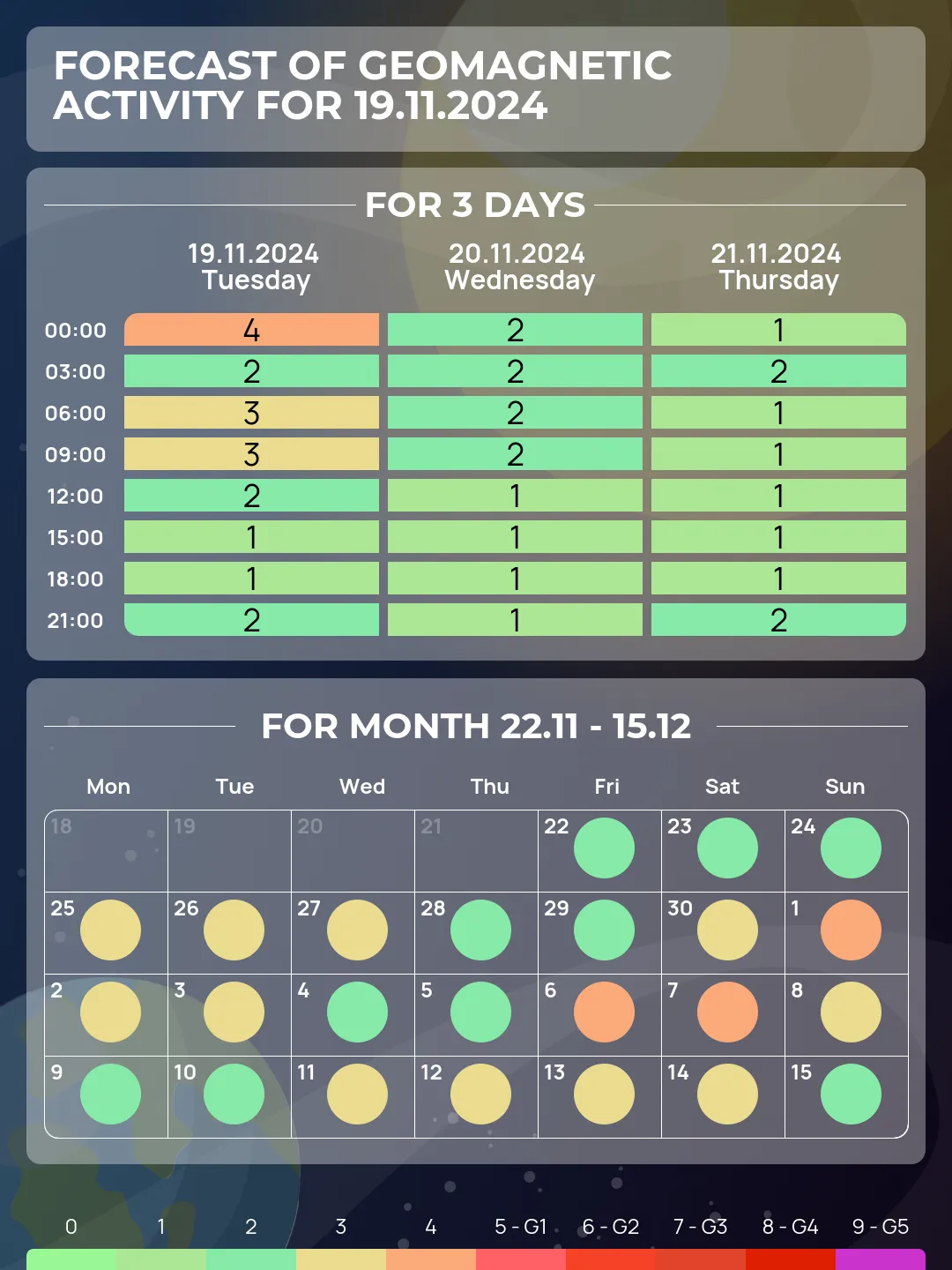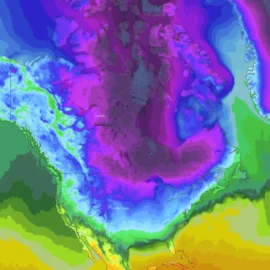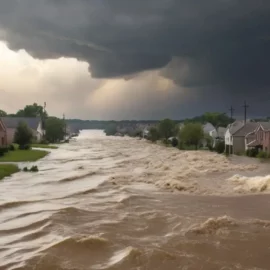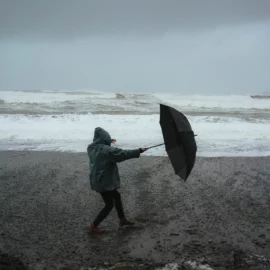Magnetic storms in November 2024 - forecast for the week

The recent solar flare, registered by NOAA, occurred in early November and was classified as an M-class flare. Flares of this class are capable of causing geomagnetic disturbances, but their strength is lower than that of X-class flares. However, the coronal mass ejection (CME) that accompanied this flare is directed partially towards the Earth and can cause a disturbance in the planet's magnetic field.
Expected impact on the geomagnetic environment:
- November 12-14: The impact of the solar flare and subsequent coronal mass ejection will be particularly noticeable. This may lead to an increase in the geomagnetic activity index (Kp) to level 4, and at some points to 5, which is classified as a minor geomagnetic storm (G1). This may cause minor interruptions in radio communications, and also affect navigation systems at high latitudes.
- November 15-16 (Friday and Saturday) – Calm conditions are expected with indices of 2-3. The peak activity is reduced, so the geomagnetic field will be mostly stable.
- November 17 (Sunday) - A slight increase to level 3 may be observed in the evening, but overall the geomagnetic field will remain within the weak level.
- November 18-19 (Monday and Tuesday) - Mostly calm conditions are expected, magnetic activity levels will be within 2-3. Minor surges are possible at night, but they will not have a serious impact on the earth's atmosphere and weather-sensitive people.
Potential impacts for weather-sensitive people:
On days with increased geomagnetic activity, especially November 12 and 13, some people may experience symptoms such as headaches, fatigue, irritability, and changes in blood pressure. It is important to take these days into account and reduce physical and emotional stress to minimize the impact.
Impact on Auroras:
Increased solar activity will increase the likelihood of auroras at lower latitudes than usual. Observers at high latitudes, especially in northern regions, can expect beautiful light shows at night.
Thus, the forecast for the week will be relevant in light of recent solar activity. The flare and coronal mass ejection will affect the geomagnetic environment, especially in the first half of the week, causing minor magnetic storms and possibly an increase in the number and brightness of auroras.
Founder and chief forecaster of the Pogodnik service. He has many years of experience in the meteorological service. He is the author of numerous scientific publications and popular articles about the weather.




